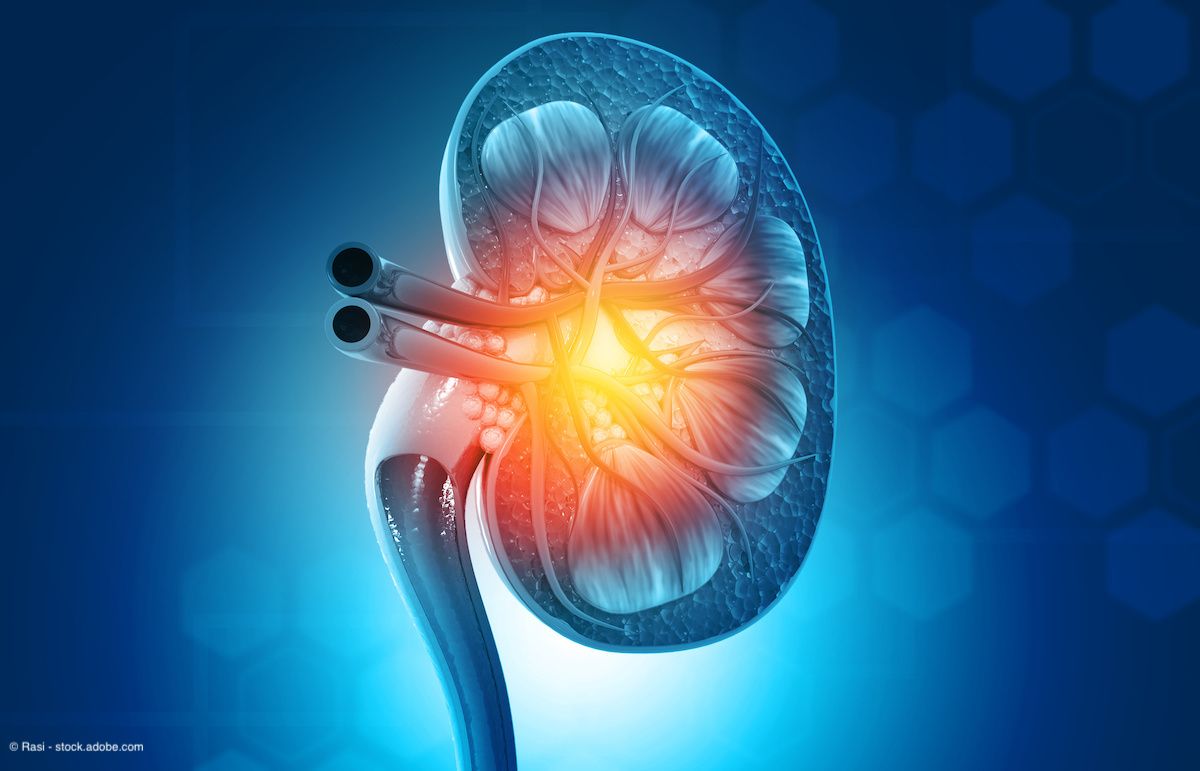News
Article
Tumor biology may affect response to kidney cancer treatment, study finds
Author(s):
In total, the investigators assessed data from 886 patients with advanced kidney cancer who were randomly assigned to receive avelumab plus axitinib or subitinib.
Investigators have identified different immunomodulatory mechanisms governing responses in patients with advanced renal cell carcinoma (aRCC) treated with avelumab (Bavencio) plus axitinib (Inlyta) vs sunitinib (Sutent) based on data from the phase 3 JAVELIN renal 101 trial (NCT02684006), suggesting that tumor biology may play a role in the activity of immune cells in response to treatment.1,2
In both treatment arms, shorter PFS was associated with high baseline levels of systemic inflammatory markers such as interleukin (IL)-6, IL8, IL10, and C-reactive protein.

Overall, the JAVELIN renal 101 trial demonstrated improved progression-free survival (PFS) among patients treated with first-line avelumab (PD-L1 inhibitor) plus axitinib vs sunitinib (both VEGF inhibitors).3 Using data from the study, investigators analyzed longitudinal blood samples and baseline tumor tissues to assess the different mechanisms of immune modulation mobilized during treatment with the immunotherapy and anti-angiogenic regimens.
The samples showed that patients treated with avelumab plus axitinib demonstrated a greater change in T-cell repertoire modulation, but less change in the number of T-cells overall compared with patients treated with sunitinib. Longer PFS was associated with baseline T-cell quantity and repertoire in peripheral blood in the sunitinib arm, but not the combination arm.
Further, patients treated with the combination regimen whose tumors had mutations in 2 or more of the 10 genes previously linked to PFS (double mutant) showed distinct profiles of circulating and tumor-infiltration immune cells compared with patients who had wild-type or single-mutant tumors. According to the authors, this finding suggests a potential role of non–T-cell–mediated and non–natural killer cell–mediated mechanisms in the treatment of patients with double-mutant tumors.
The investigators also found that PFS was associated with different peripheral cell populations in each arm. Longer PFS was associated with increased levels of lymphocytes at baseline (HR, 0.70; 95% CI, 0.55–0.88; P = .002) and low levels of neutrophils (HR, 1.54; 95% CI, 1.15–2.05; P = .003) and platelets (HR, 1.55; 95% CI, 1.21–1.99; P < .001) during treatment in the sunitinib arm. In the avelumab plus axitinib arm, PFS was associated with low levels of monocytes at baseline (HR, 1.50; 95% CI, 1.14–1.97; P = .004). Fluctuating changes were observed in blood cell levels during treatment with sunitinib, but exhibited little change during treatment with avelumab plus axitinib.
In both treatment arms, shorter PFS was associated with high baseline levels of systemic inflammatory markers such as interleukin (IL)-6, IL8, IL10, and C-reactive protein.
In total, the JAVELIN renal 101 trial included 886 patients with previously untreated aRCC who were randomly assigned 1:1 to receive avelumab plus axitinib (n = 442) or subitinib (n = 444). In the combination arm, patients received 10 mg/kg avelumab intravenously every 2 weeks plus 5 mg axitinib orally twice daily. Patients in the sunitinib arm received 50 mg sunitinib orally once daily for 4 weeks in a 6-week cycle.
In regard to the trial’s co-primary end point of PFS in patients with PD-L1–positive tumors, patients treated with the combination demonstrated a median PFS of 13.8 months, compared with 7.2 months among patients treated with sunitinib (hazard ratio, 0.61; 95% confidence interval [CI], 0.47 to 0.79; P < .001). In the overall population, the median PFS was 13.8 months in the avelumab plus axitinib arm, vs 8.4 months in the sunitinib arm (hazard ratio, 0.69; 95% CI, 0.56 to 0.84; P < .001).3 The study remainsongoing to assess the study’s other co-primary end point of overall survival.
“In conclusion, dual analyses of baseline and longitudinal peripheral biomarkers and baseline tumor molecular data from the JAVELIN Renal 101 trial provide evidence of different immunomodulatory mechanisms in patients with aRCC treated with [avelumab plus axitinib] versus sunitinib,” wrote the authors. “Overall, these integrated findings demonstrate the utility of longitudinal studies in understanding the response of both the tumor and the immune system to treatment with different regimens and suggest that although cytotoxic T cells are involved in response to A+Ax treatment in patients with aRCC, the overall mechanism of action is more complex and dependent on patient and tumor characteristics and the treatment given.”
References
1. Choueiri TK, Donahue AC, Braun DA, et al. Integrative analyses of tumor and peripheral biomarkers in the treatment of advanced renal cell carcinoma. Cancer Discov. 2024:OF1-OF18. doi:10.1158/2159-8290.CD-23-0680
2. Kidney cancer treatments and tumor biology can activate different immune-modifying processes in patients. News release. Dana-Farber Cancer Institute. February 21, 2024. Accessed February 26, 2024. https://www.newswise.com/articles/view/807007/
3. Motzer RJ, Penkov K, Haanen J, et al. Avelumab plus axitinib versus sunitinib for advanced renal-cell carcinoma. N Engl J Med. 2019;380(12):1103-1115. doi:10.1056/NEJMoa1816047
Newsletter
Stay current with the latest urology news and practice-changing insights — sign up now for the essential updates every urologist needs.
















